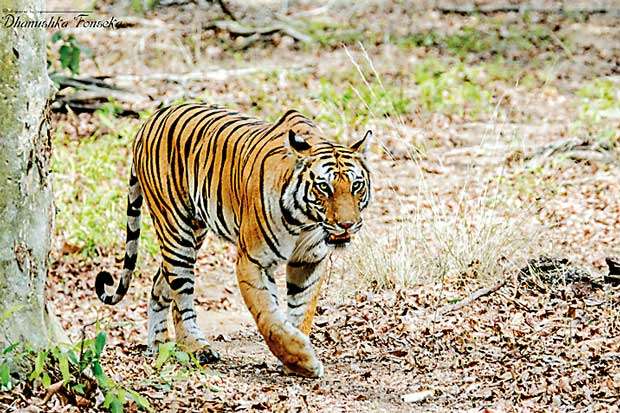10 May 2018 - {{hitsCtrl.values.hits}}

 Recently, I visited one of the most visited national parks in India, famed for its vast number of flora and fauna, the Bandhavgarh National Park. It is one of the most popular national parks in India, located in the Umaria District of Madhya Pradesh.
Recently, I visited one of the most visited national parks in India, famed for its vast number of flora and fauna, the Bandhavgarh National Park. It is one of the most popular national parks in India, located in the Umaria District of Madhya Pradesh.
Bandhavgarh was declared a national park in 1968, with an area consisting of 1536km2 (593sq mi). It has five zones, out of which, only three zones are open to the public and visitors. These are namely Tala, Magdhi and Khitauli.
This national park has a large biodiversity. The density of the tiger population in Bandhavgarh is one of the highest known in India.
According to information from wildlife officials, there are over 79 identified Bengal tigers in the park. The park also has a large number of breeding of leopards, deer, antelope and a multitude of birds.
As a wildlife enthusiast, who often travels to national parks in Sri Lanka, it was frankly a paradigm shift for me regarding the genuine effort given to wildlife conservation in India. The rules imposed by the Wildlife Department are truly commendable and those regulations are fully adhered to and implemented by the authorities, park rangers, hotels and resorts in the vicinity, as well as the visitors. Few of the rules and regulations are as follows:
This rule is common for locals as well as foreigners. Your passport or national identification number has to be entered at the booking and at the park entrance, which in turn is verified by the officials. Hence, the tickets are not available at the park entrance for purchase.
The morning game drive starts at 5:45 a.m. and ends at 11:00 a.m., while the evening game drive starts at 3:45 p.m. and can last until 6:45 p.m.
-Zone Khitulli – Morning 15 vehicles and evening 15 vehicles maximum.
-Zone Maghaghi – Morning 20 and evening 20 vehicles maximum.
-Zone Tala – Morning 20 and evening 20 vehicles maximum.
-Totalling to only 111 vehicles per day.
If a jeep driver fails to exit the park at the stipulated time, before the park gates close, even by one minute, the driver will be banned from driving in the park for one month.
Since there are no telecommunication towers or phone reception inside the park, the jeep drivers don’t get an opportunity to rush to a sighting and make chaos inside the park. Rather, each jeep takes its time to track animals and enjoy sightings at its own pace.
As these rules are imposed in the park by the wildlife conservation authorities at the highest level, the discipline is maintained to protect and respect nature.
One of the naturalists from the hotel asked me how many vehicles are allowed in the Sri Lankan national parks and I was quite embarrassed to provide him with the answer, almost 600 vehicles per day at the Yala National Park block one only. The naturalist was in absolute shock upon hearing this.
I returned home quite saddened about the way our wildlife and natural work is gradually being ruined by our own selves. It’s a valuable lesson learnt on how much countries like India have progressed over the years in terms of wildlife conservation and holding citizens accountable to protect and conserve their natural heritage for future generations.
As a nation, where are we heading? It’s still not too late to enact stringent laws to protect our flora and fauna especially those endemic to Sri Lanka and ensure everyone plays a key role in upholding such laws and regulations in the face of the country’s dwindling natural resources.
(Dhanushka Ruwanal Fonseka is Director Credit and Marketing (Non-Board Member) at Mercantile Investments and Finance)
24 Nov 2024 1 hours ago
24 Nov 2024 2 hours ago
24 Nov 2024 3 hours ago
24 Nov 2024 4 hours ago